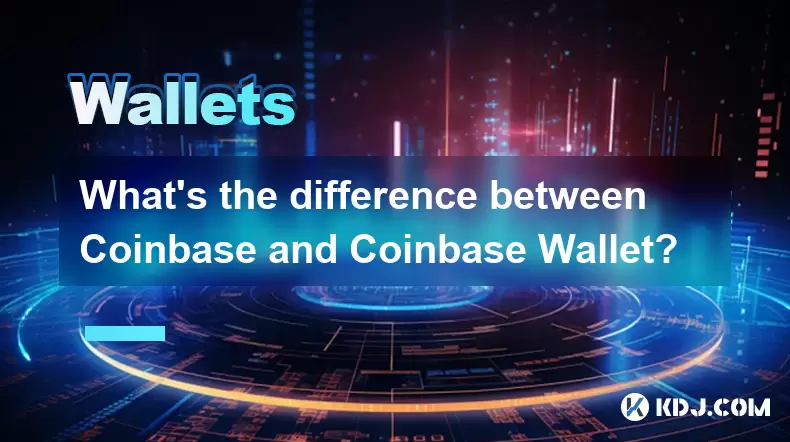-
 Bitcoin
Bitcoin $116700
2.16% -
 Ethereum
Ethereum $3830
5.76% -
 XRP
XRP $3.082
4.56% -
 Tether USDt
Tether USDt $1.000
0.04% -
 BNB
BNB $777.8
1.96% -
 Solana
Solana $173.2
5.46% -
 USDC
USDC $0.0000
0.02% -
 Dogecoin
Dogecoin $0.2146
6.85% -
 TRON
TRON $0.3384
0.92% -
 Cardano
Cardano $0.7676
5.51% -
 Hyperliquid
Hyperliquid $39.28
4.90% -
 Sui
Sui $3.723
9.07% -
 Stellar
Stellar $0.4164
6.32% -
 Chainlink
Chainlink $17.36
5.78% -
 Bitcoin Cash
Bitcoin Cash $580.9
3.62% -
 Hedera
Hedera $0.2544
5.50% -
 Ethena USDe
Ethena USDe $1.001
0.02% -
 Avalanche
Avalanche $22.81
3.81% -
 Litecoin
Litecoin $120.8
3.60% -
 UNUS SED LEO
UNUS SED LEO $8.956
-0.35% -
 Toncoin
Toncoin $3.311
4.28% -
 Shiba Inu
Shiba Inu $0.00001266
4.15% -
 Uniswap
Uniswap $10.10
5.97% -
 Polkadot
Polkadot $3.786
4.80% -
 Dai
Dai $1.000
0.01% -
 Monero
Monero $280.4
-4.02% -
 Bitget Token
Bitget Token $4.405
1.69% -
 Cronos
Cronos $0.1480
5.13% -
 Pepe
Pepe $0.00001087
5.67% -
 Ethena
Ethena $0.6348
11.62%
What's the difference between Coinbase and Coinbase Wallet?
Coinbase is a custodial exchange for easy trading, while Coinbase Wallet is a non-custodial wallet giving full control over private keys and enabling DeFi and NFT interactions.
Aug 07, 2025 at 05:35 pm

Understanding the Core Functions of Coinbase
Many users entering the cryptocurrency space often confuse Coinbase with Coinbase Wallet, primarily due to the shared branding. However, they serve fundamentally different purposes within the crypto ecosystem. Coinbase is a centralized cryptocurrency exchange platform that allows users to buy, sell, trade, and store digital assets. It functions similarly to a traditional brokerage, where the platform holds custody of users’ funds unless explicitly withdrawn. When you purchase Bitcoin or Ethereum through Coinbase, the assets are typically held in accounts managed by Coinbase itself, meaning you do not directly control the private keys.
This custodial model offers convenience, especially for beginners. The platform provides features such as recurring buys, price alerts, and integration with banking systems for easy fiat on-ramps. Security measures like two-factor authentication (2FA) and insurance on stored assets add layers of protection. However, because Coinbase controls the private keys, users are subject to platform rules, withdrawal limits, and potential access restrictions during high-traffic periods or regulatory scrutiny.
What Is Coinbase Wallet and How Does It Work?
In contrast, Coinbase Wallet is a non-custodial digital wallet that gives users full control over their private keys and, by extension, their cryptocurrency assets. It is designed to interact with decentralized applications (dApps), support multiple blockchains, and store a wide variety of tokens, including ERC-20, BEP-20, and NFTs. Unlike the exchange, Coinbase Wallet does not require a Coinbase.com account to use, although integration is available for convenience.
The wallet operates as a standalone app on mobile devices and as a browser extension. When you create a wallet, you are prompted to back up a 12-word recovery phrase, which is the only way to restore access if you lose your device. This recovery phrase must be stored securely and never shared. Because the wallet is non-custodial, you are solely responsible for the security of your funds. If the recovery phrase is lost or compromised, there is no way to recover the assets.
Key Differences in Asset Control and Security
One of the most critical distinctions lies in who holds the private keys. On the Coinbase exchange, private keys are managed by the company, meaning users trust Coinbase to safeguard their assets. This setup simplifies the user experience but introduces counterparty risk. If the exchange is hacked or undergoes regulatory shutdowns, user funds could be at risk or frozen.
With Coinbase Wallet, private keys are generated and stored locally on the user’s device. No third party, including Coinbase, has access to them. This aligns with the crypto principle of “not your keys, not your coins.” While this offers greater autonomy, it also places the burden of security entirely on the user. There is no password reset option or customer support recovery if access is lost.
How to Set Up and Use Coinbase Wallet
To begin using Coinbase Wallet, follow these steps:
- Download the Coinbase Wallet app from the App Store or Google Play, or install the browser extension.
- Choose to create a new wallet (do not select “Link to Coinbase account” if you want full non-custodial control).
- Write down the 12-word recovery phrase in the exact order shown and store it offline—never digitally.
- Confirm the recovery phrase by selecting the words in the correct sequence.
- Set a strong PIN or biometric lock for device access.
- Once set up, you can receive crypto by sharing your wallet address or scan a QR code.
To transfer assets from the Coinbase exchange to Coinbase Wallet:
- Open the exchange app and go to the portfolio.
- Select the asset you want to withdraw (e.g., ETH).
- Tap “Send” and paste the wallet address from your Coinbase Wallet app.
- Confirm the network (e.g., Ethereum for ERC-20 tokens) to avoid loss.
- Review the transaction fee and complete the send.
Ensure the receiving wallet supports the token and blockchain used; sending to an incompatible network can result in permanent loss.
Interoperability Between Coinbase and Coinbase Wallet
Although they are separate products, Coinbase and Coinbase Wallet can be linked for convenience. Users can connect their exchange account to the wallet app to streamline transfers. This connection allows quick movement of crypto from the exchange to the wallet without manually copying addresses. However, linking does not change the custodial nature of the exchange—funds remain under Coinbase’s control until withdrawn.
The wallet also supports decentralized finance (DeFi) interactions. For example, users can connect Coinbase Wallet to dApps like Uniswap or Aave directly through the app or browser extension. This enables swapping tokens, providing liquidity, or earning yield without relying on centralized platforms. The exchange, in contrast, does not support direct dApp integration.
Use Cases: When to Use Each Platform
For beginners or those focused on simple trading, Coinbase is ideal due to its intuitive interface and fiat integration. It’s suitable for buying Bitcoin with a credit card or setting up automatic crypto purchases. The platform handles security and compliance, reducing the user’s operational burden.
Coinbase Wallet is better suited for users engaging with Web3 applications, holding NFTs, or wanting full ownership of their assets. It’s essential for interacting with blockchain-based games, decentralized exchanges, or participating in token sales. Advanced users who prioritize privacy and control will find the wallet indispensable.
Frequently Asked Questions
Can I access my Coinbase Wallet from the Coinbase exchange website?
No. Coinbase Wallet is a separate product and cannot be accessed through the exchange website. You must use the standalone app or browser extension. Even if you link your accounts, the wallet interface is independent.
Does Coinbase Wallet charge fees for transactions?
Yes. Coinbase Wallet itself does not charge fees, but every on-chain transaction requires a network fee (gas fee) paid to miners or validators. These fees vary based on network congestion and are displayed before you confirm the transaction.
What happens if I lose my phone with Coinbase Wallet installed?
As long as you have your 12-word recovery phrase, you can restore your wallet on a new device. The funds are not tied to the phone but to the recovery phrase. Without it, access to funds is permanently lost.
Can I buy crypto directly in Coinbase Wallet?
Yes. The app includes a fiat on-ramp feature powered by third-party providers like Simplex or MoonPay. You can buy crypto using a credit card or bank transfer directly within the wallet, bypassing the need for the Coinbase exchange.
Disclaimer:info@kdj.com
The information provided is not trading advice. kdj.com does not assume any responsibility for any investments made based on the information provided in this article. Cryptocurrencies are highly volatile and it is highly recommended that you invest with caution after thorough research!
If you believe that the content used on this website infringes your copyright, please contact us immediately (info@kdj.com) and we will delete it promptly.
- BlockchainFX, Bitcoin Swift, Crypto Presales: What's the Hype?
- 2025-08-07 19:10:13
- SHIB Community at Crossroads: Shytoshi Kusama's Leadership Under Scrutiny as Elections Loom
- 2025-08-07 18:30:13
- IREN Overtakes: A New King in the Bitcoin Miner Hashrate Race?
- 2025-08-07 16:31:29
- Memecoins Mania: Whales Eye Pepe Dollar (PEPD) as Bonk Cools Off, While MoonBull Hogs the Spotlight!
- 2025-08-07 16:51:17
- Unilabs, PEPE, and Investment Risk: Navigating the Crypto Hype
- 2025-08-07 16:31:29
- Meme Coin Mania: Rug Pulls, CZ-Inspired Tokens, and the Wild West of Crypto
- 2025-08-07 16:57:14
Related knowledge

How to add Fantom network to MetaMask
Aug 07,2025 at 08:21am
Understanding the Fantom Network and MetaMask IntegrationThe Fantom network is a high-performance, scalable, and secure blockchain platform designed f...

How to update the firmware on your Trezor wallet
Aug 07,2025 at 05:00pm
Understanding the Role of Staking in Cryptocurrency EcosystemsStaking has become a fundamental component of many blockchain networks that operate unde...

How to export your transaction history from Coinbase Wallet
Aug 07,2025 at 06:50am
Understanding Coinbase Wallet and Transaction HistoryCoinbase Wallet is a self-custodial cryptocurrency wallet that allows users to store, manage, and...

How to export your transaction history from Coinbase Wallet
Aug 07,2025 at 08:49am
Understanding Coinbase Wallet and Transaction HistoryCoinbase Wallet is a self-custodial cryptocurrency wallet that allows users to store, manage, and...

How to avoid crypto wallet scams
Aug 07,2025 at 02:21pm
Understanding Common Types of Crypto Wallet ScamsCrypto wallet scams come in various forms, each designed to exploit user trust, technical ignorance, ...

How to set up a new Ledger Nano S Plus
Aug 07,2025 at 06:01am
Unboxing and Initial InspectionWhen you receive your Ledger Nano S Plus, begin by carefully unboxing the package. Inside, you should find the Ledger N...

How to add Fantom network to MetaMask
Aug 07,2025 at 08:21am
Understanding the Fantom Network and MetaMask IntegrationThe Fantom network is a high-performance, scalable, and secure blockchain platform designed f...

How to update the firmware on your Trezor wallet
Aug 07,2025 at 05:00pm
Understanding the Role of Staking in Cryptocurrency EcosystemsStaking has become a fundamental component of many blockchain networks that operate unde...

How to export your transaction history from Coinbase Wallet
Aug 07,2025 at 06:50am
Understanding Coinbase Wallet and Transaction HistoryCoinbase Wallet is a self-custodial cryptocurrency wallet that allows users to store, manage, and...

How to export your transaction history from Coinbase Wallet
Aug 07,2025 at 08:49am
Understanding Coinbase Wallet and Transaction HistoryCoinbase Wallet is a self-custodial cryptocurrency wallet that allows users to store, manage, and...

How to avoid crypto wallet scams
Aug 07,2025 at 02:21pm
Understanding Common Types of Crypto Wallet ScamsCrypto wallet scams come in various forms, each designed to exploit user trust, technical ignorance, ...

How to set up a new Ledger Nano S Plus
Aug 07,2025 at 06:01am
Unboxing and Initial InspectionWhen you receive your Ledger Nano S Plus, begin by carefully unboxing the package. Inside, you should find the Ledger N...
See all articles

























































































